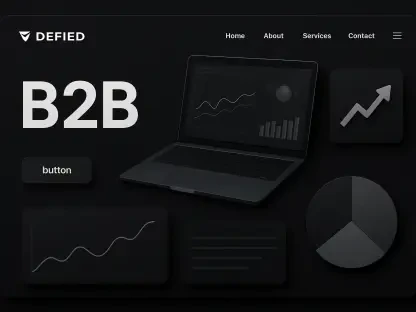Introduction
In today’s digital marketing landscape, video content reigns supreme, with the average American spending over four hours daily consuming digital videos across various platforms, highlighting a pressing challenge for advertisers. They must keep pace with the demand for dynamic, engaging content without exhausting budgets or resources, and Microsoft’s latest innovation, an AI-powered feature called Image Animation, offers a transformative solution by turning static images into captivating short videos, streamlining video production for advertising campaigns.
This FAQ article aims to address the most pressing questions surrounding this cutting-edge tool. It explores the functionality, benefits, and broader implications of this feature for advertisers navigating a video-centric market. Readers can expect to gain a clear understanding of how this technology works, its potential impact on advertising strategies, and why it represents a significant step forward in the industry.
The scope of this discussion includes an in-depth look at the challenges of video creation, the role of AI in overcoming these barriers, and the strategic advantages offered by Microsoft’s platform. By the end, a comprehensive picture will emerge of how this tool fits into the evolving world of digital marketing, providing actionable insights for businesses of all sizes.
Key Questions About AI-Powered Image Animation
What Is Microsoft’s Image Animation Feature?
Microsoft Advertising has rolled out a groundbreaking tool named Image Animation, integrated with its AI assistant, Copilot, to revolutionize video content creation. This feature enables advertisers to transform static images into short, animated videos suitable for various ad placements. Its purpose is to simplify the often complex and resource-heavy process of producing video content, making it accessible even to those with limited technical expertise or budgets.
The importance of this development lies in its ability to address a critical gap in digital marketing. With video consumption continuing to rise, advertisers face mounting pressure to deliver dynamic content that captures audience attention. Image Animation allows for the repurposing of high-performing static creatives into engaging formats, ensuring campaigns remain relevant across Microsoft’s extensive publisher network during its global pilot phase, excluding certain regions like mainland China.
This tool not only saves time but also reduces production costs significantly. By leveraging AI, it automates the animation process through Ads Studio’s video templates, offering a seamless way to enhance existing assets. Advertisers can now tap into premium video inventory without the traditional hurdles associated with video production, marking a notable advancement in the field.
Why Is Video Content So Crucial for Advertisers Today?
Video content has become a cornerstone of effective digital marketing due to its unparalleled ability to engage audiences and convey messages quickly. Studies consistently show that consumers are more likely to interact with and remember video ads compared to static images or text-based formats. This trend underscores the urgency for advertisers to incorporate video into their strategies to maintain a competitive edge.
The challenge, however, is that creating high-quality video content often demands substantial time, money, and specialized skills. Many businesses, especially small and medium-sized enterprises, struggle to meet these demands while keeping up with the rapid pace of digital trends. This barrier can limit their reach and impact in a market increasingly dominated by video-driven platforms.
Microsoft’s initiative directly tackles this issue by providing an efficient alternative to traditional video production. By enabling the animation of static images, it ensures that advertisers can meet consumer expectations without overextending resources. This shift toward AI-driven solutions reflects a broader industry movement to democratize access to advanced marketing tools, ensuring broader participation in video advertising.
How Does Image Animation Benefit Advertisers?
The primary benefit of Microsoft’s Image Animation feature is its capacity to lower the entry barriers to video advertising. By automating the conversion of static images into animated videos, it eliminates the need for extensive video editing skills or costly production teams. This efficiency allows advertisers to focus on strategy and creativity rather than logistical challenges.
Another significant advantage is the extended lifespan it offers to existing creative assets. High-performing static images, which might otherwise be limited to specific ad formats, can now be adapted for video placements, maximizing their value. This adaptability unlocks access to premium video inventory on Microsoft’s network, enhancing campaign reach and effectiveness.
Additionally, this tool supports scalability for businesses of varying sizes. Whether a small startup or a large corporation, advertisers can leverage this feature to produce compelling content with minimal effort. The cost-effectiveness and time savings provided by AI automation make it a strategic asset for optimizing marketing budgets while staying aligned with current consumer preferences for video content.
What Role Does AI Play in This Innovation?
Artificial intelligence, through Microsoft’s Copilot, serves as the backbone of the Image Animation feature, driving its ability to simplify complex creative processes. AI algorithms analyze static images and apply animation effects automatically, ensuring the resulting videos are visually appealing and suitable for advertising purposes. This level of automation represents a significant leap forward in creative technology.
The role of AI extends beyond mere animation; it acts as a creative enhancer that streamlines workflows for performance marketers. By reducing manual input, it minimizes errors and accelerates production timelines, allowing teams to iterate and refine campaigns more effectively. This efficiency is particularly valuable in a fast-paced digital environment where agility is key to success.
Moreover, AI’s integration into advertising tools aligns with an industry-wide trend toward leveraging technology to solve longstanding challenges. As video consumption grows, the demand for scalable solutions becomes more pressing, and AI offers a way to meet this need without sacrificing quality. Microsoft’s adoption of such technology positions it at the forefront of innovation, shaping the future of digital marketing strategies.
What Are the Broader Implications for the Advertising Industry?
The introduction of Image Animation signals a pivotal shift in how the advertising industry approaches content creation. As video continues to dominate consumer attention, tools like this one highlight the growing reliance on AI to address production bottlenecks. This trend suggests that future marketing strategies will increasingly prioritize technology-driven solutions to maintain relevance.
Beyond individual campaigns, this feature contributes to a more inclusive advertising ecosystem. By lowering the barriers to video content creation, it empowers smaller businesses to compete with larger players, fostering diversity in the market. This democratization of technology ensures that innovation is not reserved for those with substantial resources but is accessible across the board.
Furthermore, the emphasis on repurposing existing assets points to a sustainable approach to marketing. Instead of constantly generating new content, advertisers can maximize the utility of proven creatives, reducing waste and optimizing investments. This strategic focus, supported by AI, is likely to influence industry standards over the coming years, redefining best practices in digital advertising.
Summary of Key Insights
This discussion has unpacked the essential aspects of Microsoft’s AI-powered Image Animation feature, emphasizing its role in transforming static images into dynamic video content. Key points include the tool’s ability to simplify video production, its cost-effectiveness, and its alignment with the rising demand for video in digital marketing. These elements collectively position it as a game-changer for advertisers seeking efficient solutions.
The main takeaway is that this innovation addresses critical challenges in video creation while enhancing the value of existing creative assets. It democratizes access to advanced advertising formats, enabling businesses of all sizes to engage audiences across Microsoft’s global network. The integration of AI through Copilot further underscores the potential for technology to streamline complex processes in the industry.
For those interested in exploring this topic further, resources on AI in advertising or updates from Microsoft’s Ads Studio platform can provide deeper insights. Staying informed about such tools ensures that marketing strategies remain adaptable to evolving consumer behaviors and technological advancements, offering a competitive advantage in a dynamic landscape.
Final Thoughts
Reflecting on the impact of Microsoft’s Image Animation feature, it becomes evident that this tool marks a turning point for many advertisers struggling with video content demands. Its ability to automate and economize production processes opens new doors for creativity and reach in campaigns that were previously constrained by resource limitations. This advancement stands as a testament to the power of AI in reshaping industry norms.
Advertisers are encouraged to evaluate how such technology can integrate into their existing workflows. Experimenting with this feature through Microsoft’s pilot program offers a practical starting point to test its effectiveness for specific campaign goals. Taking this step could position businesses to better captivate audiences in an era defined by video engagement.
Looking ahead, staying attuned to similar innovations proves essential for maintaining a forward-thinking approach. As AI continues to evolve, adopting these tools early allows for strategic experimentation and refinement. This proactive mindset ensures that marketing efforts remain not only relevant but also impactful in a rapidly changing digital environment.









